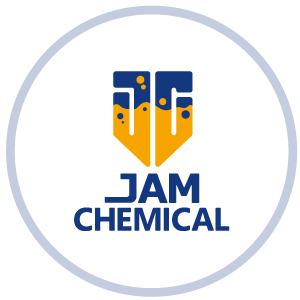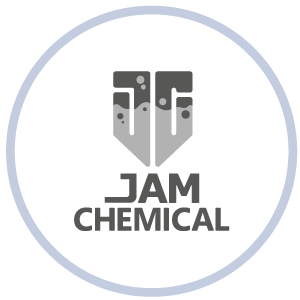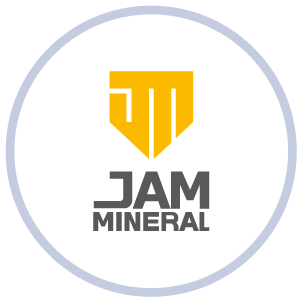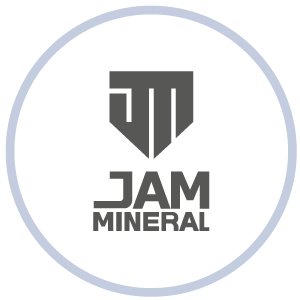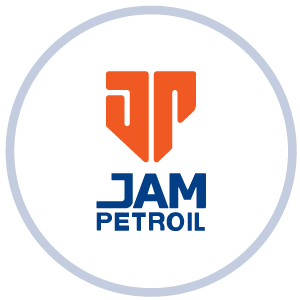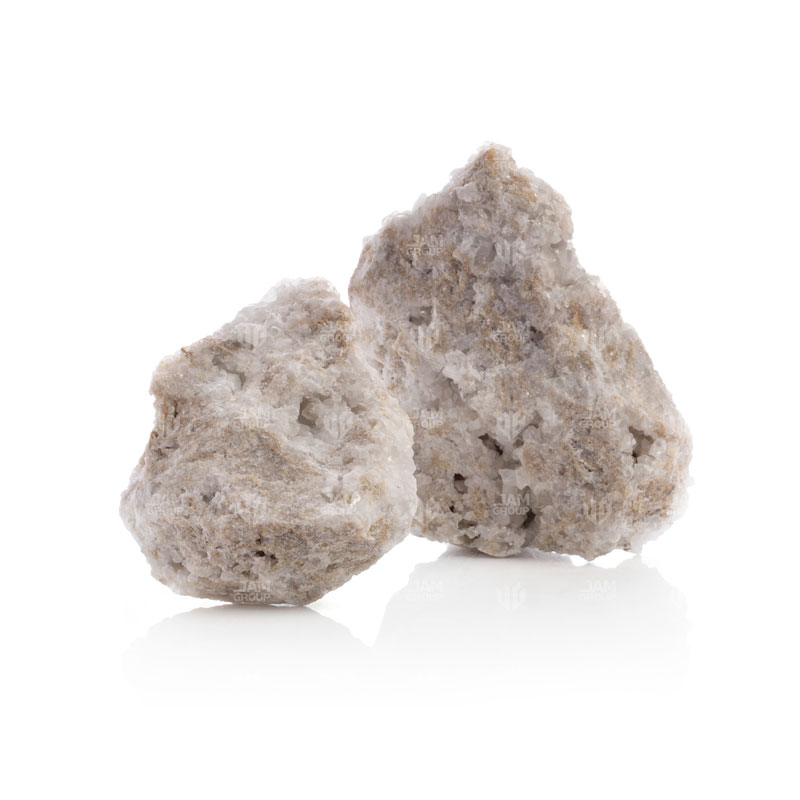Celestite (SrSO4) is the main economically exploited strontium mineral, serving as the principal source of strontium carbonate (SrCO3)and other strontium derivatives such as SrS SrCl2. Strontium carbonate is a vital industrial reagent used to make glass for color television tubes and ferrite magnets for small DC motors. Also, it contributes to the manufacturing of strontium metal and other strontium compounds, pigments, driers, paints, specialized and iridescent glasses, and pyrotechnics. Celestine, As a result, is a sought-after mineral that functions in several industries. This mineral is provided by Strontium Sulphate Manufacturers in various forms, such as powder, lump, and concentrated, making it easier to handle for different uses.
Regarding purchasing Iran celestite, JAM Group Co. is a trustworthy company. This qualified Celestine Powder Manufacturer relies on various Iran Celestite Mines, such as Semnan Celestine Mines, Behbahan Celestite Mine, Shahrood Celestite Mine, and Neyshabur Celestine Mine, to provide a high-quality mineral that meets all international standards. It is vital to note that you can count on JAM Group for different shapes of celestite, including lumps, concentrates, granules, and powders. This company also presents various grades of celestine based on different amounts of purity that find use in specific industries. Please remember that you can even go for specific sizes of particles when you decide to purchase this substance in powder form. For more information about JAM Group Co. and its products, don’t hesitate to get in touch with us.
What is Celestite?
Celestite (SrSO4), also known by its IMA-accepted name “celestine,” is a naturally occurring type of strontium sulfate. It is a common sulfate mineral in the Earth’s crust. It belongs to the Pnma space group and has an orthorhombic structure with the lattice constants a = 148.36, b = 145.35, and c = 146.87. In addition, a unit cell of celestite has four molecules. Each S atom forms an SO4 tetrahedron in the celestite structure, while the Sr atom coordinates with twelve oxygen atoms, and the lengths of the Sr-O bonds are not uniform.
What is Strontium Sulfate?
Strontium sulfate salt is a white, crystalline powder. In water, it dissolves at a rate of 1 part in 8,800. It is significantly more soluble in alkali chloride (e.g., sodium chloride) and more soluble in diluted HCl, nitric acid, and HCl solutions. It is valuable as a naturally occurring precursor to more important strontium compounds. In the industrial setting, it converts into nitrate for use in pyrotechnics and carbonate for use as a ceramic precursor. Strontium used to be a minor element in terms of production volume. However, the recent discovery of two significant benefits of strontium has altered the situation. In color television tubes, strontium can be used as an absorber to lessen the strength of X-ray radiation. In addition, it is the primary raw material used to create permanent ceramic magnets.
Celestine Properties
The sporadic delicate blue tint of the Celestite is how the material got its name. Celestite is similar to barite, barium sulfate, but is far less frequent. There is a gradation between Celestine and barite, and barium and strontium can substitute for one another in the crystal structure. Celestite grows as well-formed crystals that have a recognizable light blue color. In addition to the lighter and darker blue color zones, crystals can also be a solid color of blue. While Celestine is colorless in its purest form, different impurities give the mineral a wide range of hues, particularly its celestial blue tint.
Celestines occur as fibrous, compact, and enormous crystals. It is mainly discovered in sedimentary rocks and frequently coexists with halite, anhydrite, and gypsum. It occasionally has sulfur inclusions in various places, however, often in minor amounts. Madagascar is home to crystal specimens with a light blue hue. White and orange varieties were also discovered at Yate, Bristol, UK. Further, it should be noted that several celestine mines have also been discovered in Iran that contains pure and abundant mineral amounts. Iran Celestite holds specific characteristics that make it a reliable option among other possible regions in the world. Below, you can find a list of the major mines in this country.
- Dehloran Celestine Mine;
- Semnan Celestite Mines;
- Behbahan Celestine Mine;
- Shahrood Celestine Mine;
- Neyshabur Celestite Mine;
- Varamin Celestite Mine.
Different Grades of Celestite
Metals, chemical substances, and crystals are categorized using grades. It is the most common method for identifying different substances and the same materials with varied amounts of purity or properties. Identifying a product’s grade using numbers, letters, or a mix of both is possible. Usually, a substance’s chemical makeup, mechanical qualities, or both determine its grade. In this case, businesses can check the grades and gather information about the material’s characteristics to find their intended product that meets their expectations. Below, you can read more about the different outcomes of Iran’s celestite mines which come in various forms.
The Powder Grade of Celestite
Iranian Celestite powder manufacturers exploit various mines, such as Semnan, Dehloran, and Behbahan Celestite Mines, to produce pure products in different sizes and purity levels. The following detail helps you learn more about these materials’ amount and size.
- SrSO4: 80% to 95%;
- BaSo4 (%): 0.5% to 2%;
- Size: 10-400 mm.
When grading comes to powders, such as the powder grade of Celestite, there are other variables to consider. It is because this is impossible to obtain a particle of consistent size during the size reduction procedure. As a result, a unique technique called size separation functions to separate particles of a particular size. Sieving, sifting, and screening are other terms for size separation. The physical variations between the particles, such as size, shape, and density, provide the basis for this method. When a number refers to characterize a powder’s fineness, it means that all of the powder’s particles must pass through a sieve whose nominal mesh aperture, expressed in microns (m), is equal to that number. Still, it does not mean that Celestite is only presented in a powder shape.
The Lump Grade of Celestite
A lump refers to a compact mass of a substance, particularly one without a clear or consistent shape. Some in-demand companies need to purchase celestine in lump form for various reasons. In this case, they can ask a celestine lump manufacturer that provides this type. It is helpful to know that the lump grade of celestine holds various amounts of SrSo4 and BaSo4. So, each customer can ask for this grade with their intended purity level.
The Concentrated Grade of Celestite
Celestite concentrate manufacturers utilize variously advanced tools and state-of-the-art methods to provide pure forms of celestine as a celestine concentrate. The good news is that you can have Iran celestite derived from Shahrood, Neyshabur, and Varamin Celestine Mines in the concentrated grade. A pure outcome may hold the elements below:
- SrSo4: 95.5%;
- CaSo4: 3%;
- BaSo4: 0.5%;
- SiO2: 0.5%;
- Fe2O3: 0.5%
The Granular Grade of Celestite
When water or other liquids are cooled slowly enough, crystalline crystals form and expand as the molecules in their random positions rearrange. Granular celestite manufacturers may use a similar crystallization process for producing granular materials, like our intended product. You can have pure celestine in a granular shape from Iran mines, like Semnan, Behbahan, and Dehloran Celestite Mine. This type of product also holds various amounts of purity.
Celestite Production Process
As a mineral, celestite must go through several stages, like mining and beneficiation, to become a purified outcome suitable for various applications. In the first step, the mineral must be obtained by mining. Celestine concentrate manufacturers usually employ different mining machines, like advanced Excavators, in the mining stage. Mining excavators, sometimes referred to as diggers, are used for earth moving to remove soil, making it simpler to extract the materials. Backhoes, bucket wheel excavators, power shovels, and dragline excavators are a few of the excavators used in mining. Using a bucket, these tools excavate and pull the material back toward the machine. On the body, they also have a self-contained driver-only cabin that houses the engine and other components.
After the mining stage, the minerals must undergo another process called beneficiation. Initially, gravity, magnetic separation, and occasionally heavy liquid separation were used as the primary physical concentration methods for celestite ore beneficiation. Today, flotation is the most effective method for producing high-quality celestite. However, physical concentration, which comprises gravity and heavy liquid separation, is still used on relatively high-grade ore containing calcite and silicate. Below, you can read more about the beneficiation stage.
Gravity Pre-Concentration
Celestite was first processed using either gravity pre-concentration or heavy liquid separation before the invention of the flotation method. On somewhat coarse-grained ore that contains clay, calcite, and limonite, high-grade celestite concentrate can be obtained via gravity concentration. The example below shows a typical method employing gravity pre-concentration.
- Primary crushing;
- Attritioning;
- Washing;
- Impact crushing;
- Screening;
- Hydrosizing;
- Tabling.
Using an attrition tumbler and washer, this method uses friction to remove clay and limonite. In the gravity circuit, a concentrate grade ranging from 98 to 93% SrSO4 is typically generated with a recovery of roughly 85-88% SrSO4. The maximum concentrate grade is attained on the coarser fractions.
The Flotation Method
Flotation offers a way to concentrate and separate the valuable components of ore to create a grade of mineral concentrate acceptable for feeding to effective pyrometallurgical or hydro-metallurgical operations. Crushing the ore to separate grains of the different precious minerals and gangue materials, pulping the ore particles with water, and then selecting and making the surface of the target mineral hydrophobic are all steps in the flotation process. The hydrophobic particles are transported through a stream of air bubbles, which stick to them and cause them to levitate. The hydrophobic particles subsequently aggregate in a froth layer that flows over the flotation cell’s weir.
A succinamate collector is typically preferred for celestite flotation due to the common occurrence of silicates, such as calcite and clay, in the celestite ore. As a froth extender, the employment of a mixture of frother and oleic acid increases celestite recovery without lowering the concentrate grade. Sodium silicate can act as a silica depressant and slime dispersion during celestite flotation. Calcite depressants made from oxalic acid are employed. If fluorite occurs in the ore, citric acid may be used instead of oxalic acid. Some ore types contain sulfides and base metals, in which pyrite or the base metals are removed before celestite flotation.
About JAM Goup’s Celestite
Celestite is widely distributed in different regions of Iran. Iran’s celestine mines are in Semnan, Dehloran, Behbahan, Shahrood, Neyshabur, and Varamin. These mines that contain this mineral consisting of strontium sulfate, help JAM Group Co., a Celestite Lump Manufacturer and a powerful strontium sulphate supplier, to provide every in-demand company worldwide with a pure product. Each customer can smoothly rely on our products, which come in various shapes, including lumps, concentrates, powders, and granules. Importantly, you can ask for different amounts of purity when purchasing celestite in each of these shapes.
JAM Group Co., a reputable Celestite lump manufacturer, uses international methods to pack the product. It means you can have your intended grade of celestite in reliable packings that ensure safety regarding transportation. Furthermore, you can go for your desired ways of packaging the product and shipping it; this option helps you to manage the whole purchasing phase and enjoy a stress-free shopping experience. For more information on this, please feel free to reach out to us.
Conclusion
Celestite (SrSO4) is the leading resource of strontium that occurs in nature. Various locations worldwide hold celestine mines, such as Iran, Canada, and China. Celestite manufacturers go through several stages, like mining and beneficiation, to make a purified outcome that can be utilized in the industry. It is presented in various forms, such as powder, granular, lump, and concentrated. Celestine functions in many industries. Chemical industries use about 95% of celestite to make strontium carbonate, nitrate, and other strontium compounds. The converted celestite serves a wide range of cutting-edge products, including computer and television monitor tubes, greases, soaps, alloys, anticorrosive paints, pigments, driers, fillers, ceramics, and pharmaceuticals.
| Property | Specification | Test Method |
| Chemical Type | Inorganic mineral; strontium sulfate (SrSO₄) | XRF / XRD |
| Appearance | White to pale blue powder or crystalline aggregate; free‑flowing, low moisture | Visual / sieve check |
| Whiteness/Brightness | ≥ 80 (reflectance, typical filler grade) | ISO 2470 / ISO 2469 |
| Moisture (as packed) | ≤ 0.5 wt% | ISO 787‑2 (105 °C oven) |
| SrSO₄ Content | ≥ 90 wt% (general industrial grade) | XRF |
| BaSO₄ (Barite) Impurity | ≤ 5.0 wt% (typical limit; mine‑dependent) | XRF |
| pH @25 °C (10% slurry) | 6.5-8.5 | ISO 10523 |
| Specific Gravity (solid) | 3.9-4.0 | ASTM D854 |
| Bulk Density (loose) | 1.2-1.6 g/cm³ (grade‑dependent) | ASTM D1895 |
| Particle Size (Residue on 75 μm) | ≤ 3.0 wt% (powder grade); report full PSD if required | ISO 3310 / ISO 13320 |
| Water‑Soluble Salts (as NaCl) | ≤ 0.5 wt% | Ion chromatography / conductivity |
| Iron (Fe) | ≤ 0.10 wt% | ICP‑OES / ICP‑MS |
| Loss on Ignition (1000 °C) | ≤ 2.0 wt% | ISO 1158 / ASTM D7348 |
| Shelf Life | 24 months if kept dry and sealed | Retain re‑test (moisture/whiteness) |
| Packing | 25 kg bags; 1,000-1,250 kg jumbo bags; bulk on request | – |
| Storage | Cool, dry, covered; avoid moisture and contamination | – |
There are abundant celestite resources in Iran, Canada, the United States, China, and other regions. Still, from the perspective of production volume, strontium used to be one of the less significant components. However, the recent identification of two critical uses for strontium has altered the picture for the application of Celestine in the industry. Nowadays, Celestine is regarded as a vital mineral for producing strontium. Strontium is valuable as an absorber in color television tubes to lessen the strength of X-ray radiation. It is also the primary raw material used in permanent ceramic magnets.
It is also vital to note that producing strontium carbonate is just one of the celestine applications; this mineral also plays a crucial role in other industries. It can be used in pyrotechnics (fireworks), electronics (TV, tablets, and screens), fluorescent glass, electromagnets, alloys, and more. However, strontium carbonate is made (99%) almost entirely out of the Celestine. In the following, you can read more about Iran’s celestite applications as a rich source of Strontium Carbonate and in other businesses.
The Production of Strontium Carbonate
Celestite is the only material required to make strontium carbonate and other strontium compounds. Strontium carbonate (SrCO3) plays a significant role in producing glass cathode-ray tubes used in color television and computer monitors. Typically, the glass material contains 12-14% SrO, produced by the high-temperature breakdown of SrCO3. It serves as a stabilizer in various paints or coatings and as filler in rubber and plastic, making it a crucial raw material in chemical engineering. SrCO3 also finds applications in tanning products, farm chemicals, and pharmaceuticals. In some high-tech ceramics, the use of SrCO3 has also been documented.
The Production of Strontium Metal
Another primary application of celestite is to produce strontium. Strontium is a soft, silver-white, yellowish metallic element that is an alkaline earth metal with a solid reactivity to chemicals. A thick layer of dark oxide forms when the metal reacts to air. Like its two vertical neighbors in the periodic table, barium, and calcium, strontium exhibits physical and chemical characteristics. It is mainly obtained from the minerals celestine and strontianite, which are found naturally.
Glass Production
Glass production is divided into two methods: the float glass process, which creates sheet glass, and glassblowing, which makes bottles and other containers. Throughout the history of glass, it has taken place in various ways. Celestine concentrate manufacturers provide celestite as a reliable mineral for producing glass in multiple ways.
○What exactly is celestite?
Celestite—also called celestine—is strontium sulfate (SrSO₄), a sulfate mineral with an orthorhombic crystal system. It’s best known for its pale sky-blue crystals but can appear colorless or white. Beyond display pieces, celestite is the principal natural source for strontium chemicals used in ceramics, glass, magnets, and pyrotechnics.
○Where is celestite found and how does it occur?
Celestite typically forms in sedimentary environments, often alongside halite, gypsum, and anhydrite. It appears as granular masses, fibrous aggregates, or sharply formed crystals. Notable deposits occur worldwide; Iran hosts several productive sites, supplying industrial feedstock with stable quality for downstream conversion into strontium carbonate and nitrate.
○How is celestite transformed into industrial strontium compounds?
Although sparingly soluble in water, SrSO₄ is processed via chlorination or acid routes to create soluble intermediates. These are converted to strontium carbonate or nitrate through precipitation and purification steps. Resulting compounds feed uses like ferrite magnets, red pyrotechnic compositions, and specialty glass where strontium moderates X-ray transmission and tunes optical behavior.
○What defines an industrial-grade celestite concentrate?
Buyers focus on SrSO₄ content, BaSO₄ substitution, silica and carbonate gangue, moisture, and consistent particle size after crushing/milling. Stable chemistry supports predictable reaction yields and filtration rates during conversion. Physical attributes—bulk density, flowability, and minimal fines—affect handling, hopper discharge, and transport costs, especially for bulk or jumbo-bag shipments.
○How does JAM Group Co. deliver celestite to global customers?
JAM Group Co. sources from Iranian deposits including Dehloran, Semnan, Shahrood, Neyshabur, Varamin, and Behbahan. We supply screened lump ore or milled concentrates packed in 1–1.25-ton jumbo bags or shipped in bulk. Commercial terms include EXW, FOB, CFR, and CIF, with COA/SDS and optional third-party inspection available.
○Can JAM Group Co. tailor specifications and support trials?
Yes. We tune SrSO₄ targets, limit BaSO₄, and set particle-size ranges to match your leach or chlorination flowsheet. Representative samples are dispatched for lab and pilot evaluation. Our QA provides batch COAs and retains reference samples; logistics coordinates moisture-controlled loading, palletization, and sailing windows to align with production schedules.
HOW CAN JAM GROUP HELP YOU?
Send us a message and our friendly team will get back to you within one business day.


